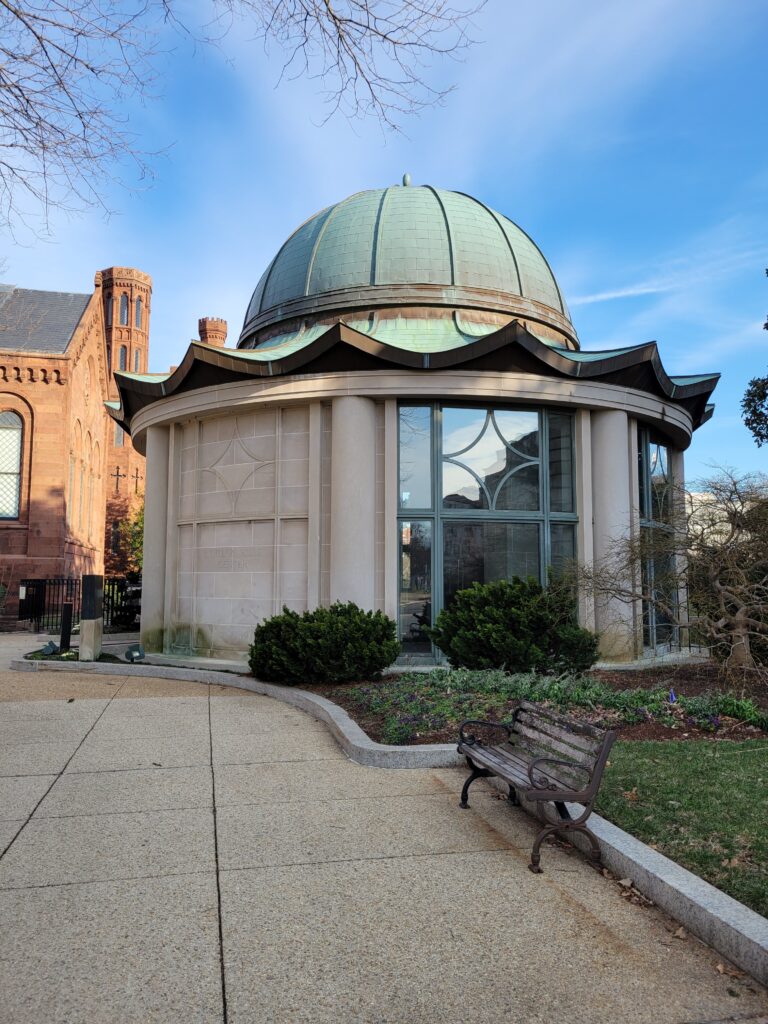Speaker: Stephanie Hulman
Title: “Smart Storage on the High Seas: The Examination and Treatment of a 19th Century Sea Chest”
Date: Jan. 8, 2015; Three Ring Circus “Nautical Related”
Summarizer: Greta Glaser

This technical investigation and treatment of a 19th-century sea chest was completed by Stephanie Hulman in her second year as a graduate student in the Winterthur/ University of Delaware Program in Art Conservation. The goals of her study were to characterize the materials used to manufacture the object in order to confirm anecdotal evidence for its approximate date, guide treatment decisions, and inform future studies of similar objects.
The chest that Hulman examined is constructed from pine boards and has canted sides, consistent with construction techniques of sea chests of a similar time period. The iron butt hinges also date the piece after the 1800s. Painted decorations include flags, patriotic shields, and a pentagram, all of which were typical decorations that sailors used to embellish their personal storage chests. At the time of the investigation, the chest had an overall surface coating which was distressed and darkened. The chest has becket handles made of rope wrapped in fabric which had been repaired in the past using electrical tape. Though the chest was acquired with no provenance, and it is not clear if this chest was used on a sea vessel, evidence on its interior suggests it was used as a tool chest. The damage to the exterior painted surface on the chest could have related to a nautical history, and it was important to preserve this evidence as the treatment progressed.
Hulman used numerous analytical techniques to characterize the various materials used in the construction of the sea chest. Ultraviolet induced fluorescence allowed her to visually assess the condition of surface coating, which appeared blue-green under UV illumination. X-ray fluorescence revealed the heart-shaped escutcheon to be copper, and the hinges to be iron. Neither of these results discredit the chest’s 19th-century date. She also used cross-section microscopy, scanning electron microscopy – energy dispersive x-ray spectroscopy (SEM-EDS), Fourier transform infrared spectroscopy (FTIR), and Raman spectroscopy to characterize the paint materials. Optical microscopy revealed a blue toning layer beneath the painted designs and a surface coating throughout the object. FTIR confirmed the presence of prussian blue, and with SEM-EDS she found barium, likely indicating a barium sulfate filler in the paint. These pigments were used during the 19th century. Hulman also discovered through cross-section microscopy that the stratigraphy of the paint on the trim differs from the other decorations and may have been added at a different time.
The binding material in the rope handles was analyzed using gas chromatography – mass spectroscopy (GC-MS), which identified tar. Literature suggested that Stockholm Tar was used in shipbuilding to waterproof organic materials such as rope. Fiber analysis using polarized light microscopy was completed for the materials in the becket handles which identified animal hair in the fabric covering the rope, cotton fibers in the marline around the fabric, and bast fibers in the rope. These findings are consistent with the purported 19th-century dating of the object.
Treatment followed Hulman’s investigation. The distressed wax coating was removed with mineral spirits, and the discolored oleo-resinous coating was reduced with a water-xylene emulsion. The cleaned surface was coated with microcrystalline wax to re-saturate the colors and protect the surface. Gamblin Conservation Colors were used to disguise modern drips of paint. Little other aesthetic re-integration was completed given the value of the sea chest’s history of use. The pressure sensitive tape on the becket handles was removed with heat to soften the adhesive, and the adhesive residue was reduced with toluene. PVA AYAF was used to consolidate the rope, and BEVA film and BEVA infused tissue were used to mend the fabric. The broken becket handle was reinforced with an 18-gage stainless steel wire inserted into each end of the broken rope and secured with Epotek 301-2 epoxy.